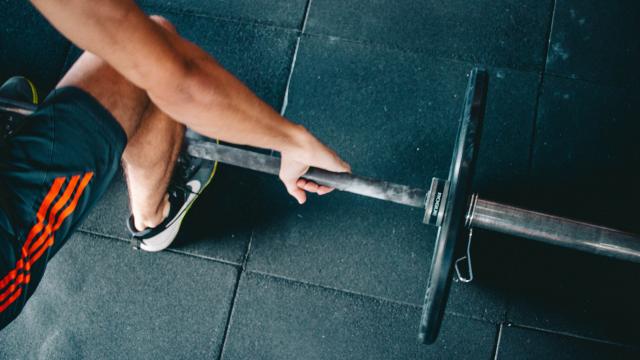We’re probably all used to getting calluses on our feet, but tiny ones can develop on your hands and fingers if you lift weights often, or if you do a lot of work with gymnastics gear like rings and pull-up bars. The ways to manage them have a lot in common with our advice on calluses in general, but their small size and delicate position require a bit of extra care.
Don’t let calluses get too big
A large callus on your foot isn’t always a big deal; if it’s not bothering you, you’re fine to leave it alone. But if you let a callus on your hand get too crusty, it can rip off suddenly in the middle of a lift. So be vigilant: once you notice a callus getting big, you should probably do something about it.
Lifters often assume that if their calluses develop as a result of lifting, they’re protective and must be kept in place. That’s only half true. Some thickening is happening under the surface no matter what you do, but the crusty bits that can be filed off, probably should. There will still be plenty of thickened, tougher skin underneath.
You may also hear people say that the rough texture of calluses can help you to keep your grip, but any callus that’s rough enough to do that is also a liability for tearing. Instead, file your calluses down so they don’t rip, and use chalk for added friction.
How to care for calluses
The best way to file down a callus is to soften it in water—this is a perfect bathtime activity—and to abrade it with an appropriately aggressive instrument. A nail file isn’t usually up to the job, but a pumice stone could work for some light exfoliation. Not enough? Try one of the files that looks like a cheese grater. I know people who swear by the ones made by Microplane, the same company that makes the grater I use for lemon zest. The food/foot association is enough to turn me off personally, but I hear they’re really good.
There’s nothing wrong with using your fingernails to scrape at a callus; I met someone who swears by the side of a spoon (that, one hopes, he does not also use for food). If the callus is wet, you probably don’t need anything sharp to do the job. If you do use any kind of blade or callus shaver, just be careful that you don’t end up cutting too deep and hurting yourself.
Personally, my favourite callus-care tools are a metal file like a Seki Edge, and an electric callus grinder. I also pick at them by hand (carefully!) after a shower. (You can read more about my favourite tools here.)
My ideal callus care routine looks like this:
- Take a bath or shower to soften the skin.
- If any dead skin comes off easily, remove it with fingernails or by rubbing with an exfoliating cloth.
- If you have monster calluses that need extra attention, use a callus file or grinder to remove any excess dead skin. By the end of this step, there should be no jagged edges. (An emery board can help to smooth things down if your file was particularly coarse.)
- Apply a moisturizing lotion.
Beware of picking at a callus when your skin is very dry. Often we notice calluses right after lifting, when our hands are chalky. But this is risky: Dry skin is more likely than wet skin to rip and take healthy skin with it. It’s okay to file calluses when they’re dry, but try not to peel, pick, or pull at them.
What to do about a ripped or cracked callus
If you’ve already ripped a callus, your best course of action will depend on what happened to the living skin underneath. If it’s intact—no bleeding, no raw pink skin—you can manage it as above. File it smooth and get back to work.
But if you’ve drawn blood, you’ll need to treat the callus more carefully. Trim off any flaps or excess (cuticle nippers are perfect for this) and file down any rough edges. If a callus has gotten so thick that it’s cracked, file down the surface as best you can, or else it may crack further.
Treat what’s left as an open wound, because it is. Wash it, and cover it to keep it clean. Make a gymnastics-style tape grip to protect palm calluses the next time you lift, or use a soft tape, like thumb tape, to cover calluses on your fingers.
Prevent the worst calluses by gripping the bar properly
You can’t completely prevent calluses, but the way you grip the bar can reduce the friction and pressure that creates them. A lot of newbie lifters will try gloves, figuring they must help, but gloves tend to add their own issues and may make the problem worse.
Instead, look at your hand position. For pulling exercises like deadlifts, make sure the bar is at the base of your fingers, not centred on your palm. This prevents the skin at the top of your palm from getting unnecessarily squeezed under the bar. You’ll still get some small calluses, but not nearly as bad as if you held the bar differently.
Other types of equipment have their own hacks. If you jump rope a lot, look for ropes with a padded handle. And if your grip often slips, chalk or lifting straps may help you to be able to hold onto the bar more securely, indirectly giving calluses less of a chance to form.

Leave a Reply
You must be logged in to post a comment.